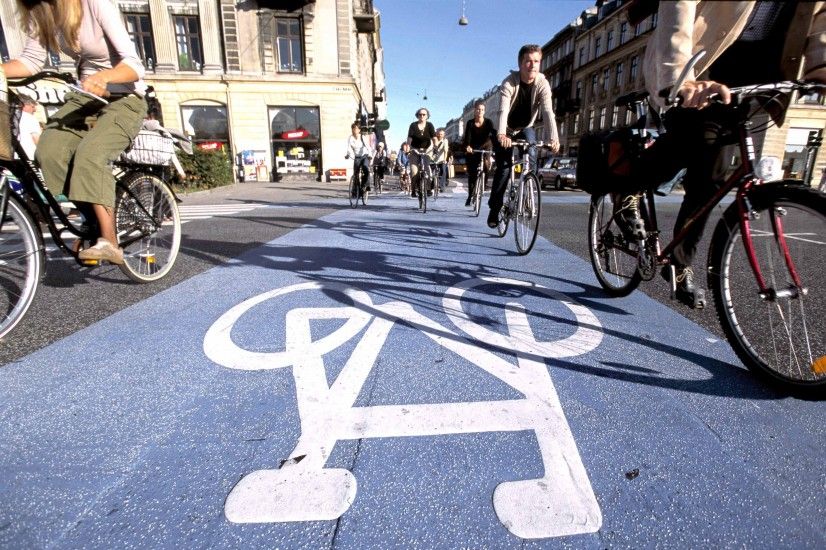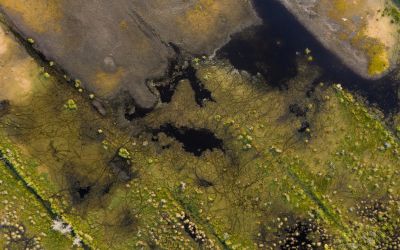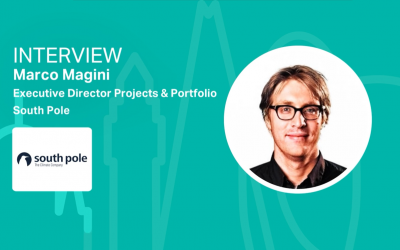Urban transport in Denmark – efficient and innovative
Cities and urban areas play a central role in our society today. Large parts of our populations live and work in urban areas, and cities also play an important role as centres of economic activity. In this light, it is essential that we consider how to ensure that our urban transport systems are sustainable, while at the same time providing a high level of mobility. This is not the least important aspect, as mobility and the existence of efficient infrastructure are key elements in facilitating growth.In Denmark, these ambitions are seen as complementary aspects of a co-ordinated strategy. Our efforts to achieve sustainable urban travel are based on a multifaceted approach that relies on efficient and integrated public transport, deployment of new technologies and on further developing the benefits of being a bicycling nation.

Efficient urban transport systems enable a swift and easy transport of people and goods and reduce the hours lost while waiting in congested traffic lines. Investments in comprehensive and modern public transport, integrated infrastructure solutions, the utilisation of new technologies and the promotion of bicycles as an easy and practical means of urban transport are central elements of the broad Danish approach. Our aim is to reduce the environmental impact of our transport system, while simultaneously ensuring a high level of mobility.
Convenient and integrated public transport
More and improved public transport is an essential element of a greener transport system in major cities. Public transport should be an easy everyday alternative to the car. Danish cities already boast a comprehensive and modern network of public transport, and large sums are currently invested to increase the availability and attractiveness of public transport in cities.
A new metro was completed in 2007 in Copenhagen providing the capital of Denmark with more than 21 km of state-of-the-art driverless metro services. Departing every fourth minute, the Metro provides fast and easy access between the city centre and the wider Copenhagen area. For instance, it only takes 14 minutes to travel from the city centre to the doorstep of Copenhagen Airport. A planned doubling of the metro lines will be completed in 2018 which will further extend the metro network in the Copenhagen area.
In Copenhagen and other major cities such as Aarhus and Odense, public funds are also invested in light railways. Efforts to make buses more efficient, the provision of real-time traffic information to bus passengers, assigned bus lanes and improved bus terminals all aim to make public transport as accessible an option to passengers as possible. A strong public transport system is thus at the heart of our ambitions to promote green mobility in our cities.
Planning for easy access
As a general principle in urban planning in Denmark, residential areas, business areas and new urban areas must be located in close proximity to train or metro stations in order to maximise the use of public transport. The principle is exemplified by Nordhavnen, the largest metropolitan development project in Scandinavia, which is currently being established in the northern part of Copenhagen. A new metro station ensures that the new district is fully integrated into the public transport network.
It is a priority issue in our approach that different urban modes of transport are well integrated. This is important to fully utilise the benefits of a comprehensive public transport network and enable passengers to make transport choices that are tailored to their needs. Initiatives include easy access to bring bicycles on trains. In similar vein, park and ride facilities have been established in several cities that make it easy to combine the use of car and train.
Pioneering green technologies
A green transformation of the transport system is a central ambition of the Danish Government. While we can be pleased about decreased levels of air pollution, efforts are still needed to reduce emissions. These efforts must aim to promote the development of new and greener transport solutions as well as to further improve existing technologies.
The Danish transport policies aim to synthesise Denmark’s infrastructural and environmental challenges and make Denmark independent of fossil fuels in the long term. Reducing the level of pollution is particularly important in our cities, as this is where health damage is by far the greatest.
It is my ambition that Denmark will become a pioneer of new and greener transport technologies. Our efforts must focus on developing and testing new technologies, new alternative fuels and innovative ways of guiding consumers towards greener choices.
Vehicle efficiency
A number of pilot projects have already been launched, including the use of biogas, electricity or hybrid technologies in buses. Most passengers are probably unaware that the bus they rely on runs on electric or hybrid technology. The important question is that we have an urban space with a green profile, where people can enjoy the city with minimum inconvenience from traffic.
To many Danes, the car is an essential utility for everyday life – and it will continue to play a significant role in satisfying the transport needs of citizens. As a consequence, it is important that our vehicles are as efficient as possible.
In many ways, Denmark has already achieved much. The Danish car stock has undergone remarkable improvements in terms of energy efficiency and CO2 emissions, and Danish drivers are the greenest in the EU in terms of emissions per kilometre. It is a focus area of the government to create a greater demand for energy efficient cars by means of tax exemptions for electric vehicles and a vehicle registration tax that is even more favourable to energy efficient vehicles. It is crucial that we maintain and build on these positive developments in addition to our efforts of promoting new and greener technologies.
Denmark– a bicycling nation
As many already know, Denmark is a country of cyclists. Especially in Copenhagen, Aarhus and other major cities, the bicycle plays an important role in everyday traffic, bringing people to and from work, education and social activities. In Copenhagen, for example, the bicycle is used by more than one in three commuters every day.
If you ask a Dane exactly why the bicycle is so popular, he or she would probably find it difficult to come up with a quick answer – it is simply the natural choice for many people. Personally, I value my bicycle highly, and frequently choose it ahead of the ministerial car in the mornings to get to the Ministry.
Often, the bicycle is quite simply the smarter choice, especially in urban areas. No waiting in long lines of cars, no driving around in search of a place to park. Put simply, no other means of transport combines fast and inexpensive travel with sustainability so effectively – all the while improving the rider’s health.
Underlining the bicycle’s strong position in the Danish transport system is a deliberate integration of cycling into transport policies and urban planning by Danish municipalities. Thus, cycling is an integral part of infrastructure development in cities and towns with continuous investments in bicycle lanes and bicycle parking.
The Danish Government has a clear ambition to further increase the use of bicycles. An ambitious cycling policy was launched in January 2009 as part of a larger green transport agreement. In the agreement, about €133 million (US$175 million) for the period 2009-2014 was aimed specifically at projects that improve the conditions for cyclists, especially bicycle commuting. Considering that little more than 5.3 million people live in Denmark, this is a considerable amount of money. A large portion of these funds is designed for co-funding coherent and innovative bicycle projects in cities and towns, as this is where the bicycle’s potential is best realised with many short-distance trips.
The list of projects that have benefited from these funds is already substantial. One recent and innovative example is a new ‘bicycle super lane’ from the outskirts of Copenhagen to the city centre. The 17 km of high-class bicycle lane runs through several local municipalities. This makes it a very positive example of different authorities collaborating to reach solutions that transcend the boundaries on a map.
I personally believe that this synthesised approach to infrastructural planning is the way forward in order to secure wide-ranging and efficient bicycle solutions – in Denmark and elsewhere.
A multifaceted approach
In conclusion, the Danish efforts to achieve sustainable urban transport are based on a multifaceted approach. It relies on efficient and integrated public transport, deployment of new technologies and – of great importance to myself and my fellow citizens – on further developing the benefits of being a bicycling nation.







